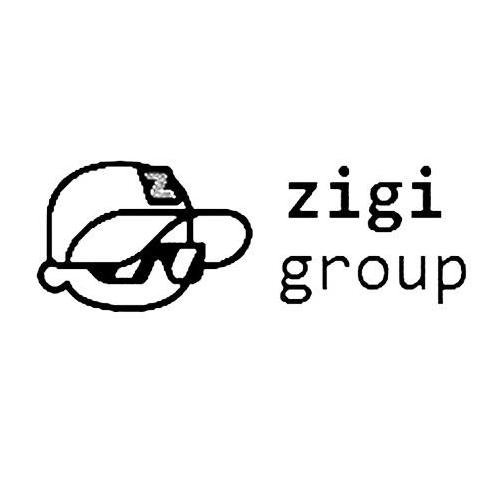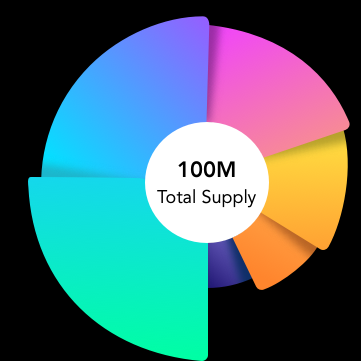- Male
- 18/05/1999
- Followed by 2 people
Friends 11
Recent Updates
- C-RAN Market To Exhibit Over 15.0% CAGR Between 2019 and 2024
The global cloud and centralized radio access network (C-RAN) market was valued at $936.3 million in 2018, and it is predicted to reach a revenue of $2,159.2 million by 2024. According to the estimates of the market research firm, P&S Intelligence, the market will progress at a CAGR of 15.9% from 2019 to 2024 (forecast period). The market is being propelled by the growing focus of industries on automation, increasing adoption of the 5G technology, rising digitalization rate, soaring use of smartphones, and mushrooming requirement for internet of things (IoT) services and solutions.
Many telecom operators are increasingly shifting toward advanced technologies in order to scale up their operations and network capabilities. Moreover, many service providers are increasingly focusing on transforming RAN in order to cater to the soaring consumer requirement for 5G solutions and services. According to various reports, telecom companies made an investment of more than $140 billion for expanding and upgrading their existing network. Furthermore, the total number of 5G subscribers is predicted to rise from 1.6 billion in 2018 to more than 1.9 billion by the end of 2019.
Additionally, many organizations around the world are increasingly using cloud computing for legacy and new systems. The incorporation of C-RAN solutions mitigates the cost burden on businesses, as these solutions do not need hardware maintenance and installation. Moreover, these solutions enable people to work from different locations and devices on a single platform, which consequently streamlines various business processes. Depending on deployment, the C-RAN market is divided into indoor and outdoor categories.
Between these, the indoor category is expected to demonstrate faster growth in the market in the forthcoming years. This is ascribed to the burgeoning need for improved network coverage in various indoor environments, including residential areas and office spaces. The market is also categorized, on the basis of component, into services, solution, and infrastructure. Out of these, the services category is predicted to exhibit the highest growth rate in the market in the upcoming years. This is credited to the increasing use of software-based solutions, which is fueling the need for professional services.
As the technology is new, there is a high demand for associated services, such as network support, security check, and training. During the last few years, the C-RAN market was dominated by North America, owing to the huge investments in advanced technologies, large-scale adoption of the 5G technology, and high LTE network coverage in the region. Moreover, telecom operators in Canada and the U.S. are focusing on making huge investments in technologically advanced infrastructure and research and development (R&D) projects for the adoption of new solutions.
Whereas, the C-RAN market is expected to demonstrate the highest growth rate in the Asia-Pacific (APAC) region in the forthcoming years. This is attributed to the growing deployment of the LTE network technology and increasing requirement for 5G network in the region. In addition, the soaring number of small and medium-sized enterprises (SMEs) is also pushing up the requirement for scalable and cost-effective networks, which is, in turn, fueling the advancement of the industry in the region.
Thus, the market will grow substantially in the coming years, mainly because of the rising************ of the 5G technology and rapid digitization all over the world.
Read More: https://www.psmarketresearch.com/market-analysis/c-ran-marketC-RAN Market To Exhibit Over 15.0% CAGR Between 2019 and 2024 The global cloud and centralized radio access network (C-RAN) market was valued at $936.3 million in 2018, and it is predicted to reach a revenue of $2,159.2 million by 2024. According to the estimates of the market research firm, P&S Intelligence, the market will progress at a CAGR of 15.9% from 2019 to 2024 (forecast period). The market is being propelled by the growing focus of industries on automation, increasing adoption of the 5G technology, rising digitalization rate, soaring use of smartphones, and mushrooming requirement for internet of things (IoT) services and solutions. Many telecom operators are increasingly shifting toward advanced technologies in order to scale up their operations and network capabilities. Moreover, many service providers are increasingly focusing on transforming RAN in order to cater to the soaring consumer requirement for 5G solutions and services. According to various reports, telecom companies made an investment of more than $140 billion for expanding and upgrading their existing network. Furthermore, the total number of 5G subscribers is predicted to rise from 1.6 billion in 2018 to more than 1.9 billion by the end of 2019. Additionally, many organizations around the world are increasingly using cloud computing for legacy and new systems. The incorporation of C-RAN solutions mitigates the cost burden on businesses, as these solutions do not need hardware maintenance and installation. Moreover, these solutions enable people to work from different locations and devices on a single platform, which consequently streamlines various business processes. Depending on deployment, the C-RAN market is divided into indoor and outdoor categories. Between these, the indoor category is expected to demonstrate faster growth in the market in the forthcoming years. This is ascribed to the burgeoning need for improved network coverage in various indoor environments, including residential areas and office spaces. The market is also categorized, on the basis of component, into services, solution, and infrastructure. Out of these, the services category is predicted to exhibit the highest growth rate in the market in the upcoming years. This is credited to the increasing use of software-based solutions, which is fueling the need for professional services. As the technology is new, there is a high demand for associated services, such as network support, security check, and training. During the last few years, the C-RAN market was dominated by North America, owing to the huge investments in advanced technologies, large-scale adoption of the 5G technology, and high LTE network coverage in the region. Moreover, telecom operators in Canada and the U.S. are focusing on making huge investments in technologically advanced infrastructure and research and development (R&D) projects for the adoption of new solutions. Whereas, the C-RAN market is expected to demonstrate the highest growth rate in the Asia-Pacific (APAC) region in the forthcoming years. This is attributed to the growing deployment of the LTE network technology and increasing requirement for 5G network in the region. In addition, the soaring number of small and medium-sized enterprises (SMEs) is also pushing up the requirement for scalable and cost-effective networks, which is, in turn, fueling the advancement of the industry in the region. Thus, the market will grow substantially in the coming years, mainly because of the rising penetration of the 5G technology and rapid digitization all over the world. Read More: https://www.psmarketresearch.com/market-analysis/c-ran-market0 Comments 0 Shares - APAC will have the Largest Demand in the Embedded Security Market
The size of the embedded security market was about $6,141 million in 2021, and it will advance at a growth rate of over 6% in the near future, to reach $10,470 million by 2030. Industrial growth is credited to the increasing count of cyber-attacks and security breaks in smart wearable devices, electronics, and IoT devices. The propagation of digital payments has additionally propagated the growth of the industry, as they are sensitive proceedings, which are required to be defended against hackers.
The expansion of smart wearables, smartphones, near-field communication technology, and mobile internet has permitted the incorporation of payment services into prevailing mobile devices. Expediency and the removal of the obligation for having cash have been the major propelling factors for cashless and contactless methods of payment, while the internet has played a vital role in allowing online commerce. The pandemic further fueled the trend of contactless and cashless payments, therefore strengthening the necessity for robust cybersecurity measures.
APAC has the largest global demand for embedded security and the industry will generate a revenue of around $6 billion in 2030, with a growth rate of around 7% in the years to come. With the growing degree of interconnectedness between a number of devices through IoT, robust IT security is the prerequisite. Cybersecurity apprehensions are increasing in numerous emerging countries like Singapore, the People’s Republic, and India. According to the reports, in 2021, Asia experienced above 25% of the cybercrimes around the world making it the most-condemned region by cyber criminals. Additionally, over 85 million accounts were broken in India.
The placement of IoT will linger to grow in the years to come. IoT-integrated devices are connected and now common in every feature of life, counting offices, homes, and cars. The technology allows quicker and improved monitoring, dispensation, and control, as and when required. Some executive can be even automated. Though, a key issue faced by IoT is that it produces too much data, which makes the devices susceptible and disposed to cyber-attacks.
Automotive will witness the fastest growth in the embedded security market demand, proceeding at a growth of around 7%, in the years to come. EVs are the major drivers of this category; as of 2021, over 6.5 million E-cars have been sold. Though, this growing trend might bring about a higher likelihood of data theft. According to the reports, the automotive industry will lose over $500 billion by 2024 to cyber-attacks. Furthermore, over 80% of the cyber-attacks in 2021 were done remotely.
Furthermore, the automobile industry is hugely dependent on software and electronics. With the evolution in the sale of connected cars and the surge in the attention on self-directed driving, security becomes supreme in connected car systems, for instance, sensors, secure gateways, car access systems, powertrains, and chassis. With security coercions continuing to increase, deeper incorporation of the software with vehicles is essential for the latter’s protection from unlawful access to systems and software management, thus improving the evolution of the embedded security industry in the future.
With the increase in the number of cyberattacks, the demand for embedded security systems is on the rise.
Read More: https://www.psmarketresearch.com/market-analysis/embedded-security-marketAPAC will have the Largest Demand in the Embedded Security Market The size of the embedded security market was about $6,141 million in 2021, and it will advance at a growth rate of over 6% in the near future, to reach $10,470 million by 2030. Industrial growth is credited to the increasing count of cyber-attacks and security breaks in smart wearable devices, electronics, and IoT devices. The propagation of digital payments has additionally propagated the growth of the industry, as they are sensitive proceedings, which are required to be defended against hackers. The expansion of smart wearables, smartphones, near-field communication technology, and mobile internet has permitted the incorporation of payment services into prevailing mobile devices. Expediency and the removal of the obligation for having cash have been the major propelling factors for cashless and contactless methods of payment, while the internet has played a vital role in allowing online commerce. The pandemic further fueled the trend of contactless and cashless payments, therefore strengthening the necessity for robust cybersecurity measures. APAC has the largest global demand for embedded security and the industry will generate a revenue of around $6 billion in 2030, with a growth rate of around 7% in the years to come. With the growing degree of interconnectedness between a number of devices through IoT, robust IT security is the prerequisite. Cybersecurity apprehensions are increasing in numerous emerging countries like Singapore, the People’s Republic, and India. According to the reports, in 2021, Asia experienced above 25% of the cybercrimes around the world making it the most-condemned region by cyber criminals. Additionally, over 85 million accounts were broken in India. The placement of IoT will linger to grow in the years to come. IoT-integrated devices are connected and now common in every feature of life, counting offices, homes, and cars. The technology allows quicker and improved monitoring, dispensation, and control, as and when required. Some executive can be even automated. Though, a key issue faced by IoT is that it produces too much data, which makes the devices susceptible and disposed to cyber-attacks. Automotive will witness the fastest growth in the embedded security market demand, proceeding at a growth of around 7%, in the years to come. EVs are the major drivers of this category; as of 2021, over 6.5 million E-cars have been sold. Though, this growing trend might bring about a higher likelihood of data theft. According to the reports, the automotive industry will lose over $500 billion by 2024 to cyber-attacks. Furthermore, over 80% of the cyber-attacks in 2021 were done remotely. Furthermore, the automobile industry is hugely dependent on software and electronics. With the evolution in the sale of connected cars and the surge in the attention on self-directed driving, security becomes supreme in connected car systems, for instance, sensors, secure gateways, car access systems, powertrains, and chassis. With security coercions continuing to increase, deeper incorporation of the software with vehicles is essential for the latter’s protection from unlawful access to systems and software management, thus improving the evolution of the embedded security industry in the future. With the increase in the number of cyberattacks, the demand for embedded security systems is on the rise. Read More: https://www.psmarketresearch.com/market-analysis/embedded-security-market0 Comments 0 Shares - Ultrasonic Sensor Market to Witness Growth due to Expanding Manufacturing Sector
The global ultrasonic sensor market is projected to attain a revenue of $12.1 billion by 2030, increasing from $4.1 billion in 2019, progressing at a 10.2% CAGR during the forecast period (2020–2030). The major factors leading to the growth of the market are rising usage of ultrasonic sensors in automobiles and increasing requirement for these devices from the manufacturing industry. On the basis of application, the market is divided into diameter measurement, loop control, object & pallet detection, distance measurement, and level measurement.
Out of these, the object & pallet detection division is predicted to witness the fastest growth during the forecast period. This is owing to the rising demand for ultrasonic sensors in autonomous cars for the detection of obstacles on roads. Furthermore, the rising demand for pallet detection from the food & beverage industry and the expanding packaging industry are also leading to the high demand for these sensors. The level measurement division held the major share of the market in 2019.
When type is considered, the ultrasonic sensor market is categorized into proximity detection and range measurement, between which, the proximity detection category accounted for the larger share of the market in 2019. These sensors are majorly being utilized in food & beverage processing applications. The category is further divided into 2 point proximity switch and proximity sensor. The range measurement category is projected to grow at the faster pace during the forecast period.
Geographically, the Asia-Pacific region dominated the ultrasonic sensor market in 2019 and is further predicted to contribute the largest revenue share to the market during the forecast period. The increasing production of automobile and expansion of the industrial manufacturing sector, particularly in Thailand, China, and India, are leading to the high demand for ultrasonic sensors in APAC. Within the region, China dominated the regional market in 2019, owing to the presence of large automotive, chemicals, and food & beverages industries.
A major factor leading to the growth of the ultrasonic sensor market is the increasing requirement for these products from the manufacturing industries. In these such industries, these devices are utilized for a number of applications, such as diameter measurement of roll, distance measurement, loop control, tank water level measurement, and height measurement. Furthermore, due to the expanding industrial production in developing countries, the demand for ultrasonic sensors is further projected to increase significantly in the coming years.
A key trend being witnessed in the ultrasonic sensor market is the rising demand for autonomous mobile robots (AMR). Owing to swift technological advancements and surging focus towards increased efficiency, productivity, and operational capacity in the manufacturing processes, the requirement for AMRs in industries such as medical, oil & gas, electronics, and automotive has been surging. AMRs are integrated with ultrasonic sensors for a number of applications, including for detecting obstacles and for determining the distance between objects.
In conclusion, the market is expected to be driven by the increasing need for AMRs and rising need for ultrasonic sensors in manufacturing sensors.
Read More: https://www.psmarketresearch.com/market-analysis/ultrasonic-sensor-marketUltrasonic Sensor Market to Witness Growth due to Expanding Manufacturing Sector The global ultrasonic sensor market is projected to attain a revenue of $12.1 billion by 2030, increasing from $4.1 billion in 2019, progressing at a 10.2% CAGR during the forecast period (2020–2030). The major factors leading to the growth of the market are rising usage of ultrasonic sensors in automobiles and increasing requirement for these devices from the manufacturing industry. On the basis of application, the market is divided into diameter measurement, loop control, object & pallet detection, distance measurement, and level measurement. Out of these, the object & pallet detection division is predicted to witness the fastest growth during the forecast period. This is owing to the rising demand for ultrasonic sensors in autonomous cars for the detection of obstacles on roads. Furthermore, the rising demand for pallet detection from the food & beverage industry and the expanding packaging industry are also leading to the high demand for these sensors. The level measurement division held the major share of the market in 2019. When type is considered, the ultrasonic sensor market is categorized into proximity detection and range measurement, between which, the proximity detection category accounted for the larger share of the market in 2019. These sensors are majorly being utilized in food & beverage processing applications. The category is further divided into 2 point proximity switch and proximity sensor. The range measurement category is projected to grow at the faster pace during the forecast period. Geographically, the Asia-Pacific region dominated the ultrasonic sensor market in 2019 and is further predicted to contribute the largest revenue share to the market during the forecast period. The increasing production of automobile and expansion of the industrial manufacturing sector, particularly in Thailand, China, and India, are leading to the high demand for ultrasonic sensors in APAC. Within the region, China dominated the regional market in 2019, owing to the presence of large automotive, chemicals, and food & beverages industries. A major factor leading to the growth of the ultrasonic sensor market is the increasing requirement for these products from the manufacturing industries. In these such industries, these devices are utilized for a number of applications, such as diameter measurement of roll, distance measurement, loop control, tank water level measurement, and height measurement. Furthermore, due to the expanding industrial production in developing countries, the demand for ultrasonic sensors is further projected to increase significantly in the coming years. A key trend being witnessed in the ultrasonic sensor market is the rising demand for autonomous mobile robots (AMR). Owing to swift technological advancements and surging focus towards increased efficiency, productivity, and operational capacity in the manufacturing processes, the requirement for AMRs in industries such as medical, oil & gas, electronics, and automotive has been surging. AMRs are integrated with ultrasonic sensors for a number of applications, including for detecting obstacles and for determining the distance between objects. In conclusion, the market is expected to be driven by the increasing need for AMRs and rising need for ultrasonic sensors in manufacturing sensors. Read More: https://www.psmarketresearch.com/market-analysis/ultrasonic-sensor-market0 Comments 0 Shares - Why will Asia-Pacific Online Fitness Service Market Surge in Coming Years?
Owing to the increasing use of smart devices, such as smartwatches, smart TVs, and smartphones, mushrooming************ of the internet, and growing public awareness about personal fitness, the global online fitness service market is expanding rapidly. According to the estimates of the market research company, P&S Intelligence, the market will exhibit rapid expansion from 2021 to 2030 (forecast period). In recent years, the internet has become affordable for the masses, primarily due to rapid technological advancements.
As per Our World in Data, the total number of internet users in India, the U.S., and China is 391 million, 245 million, and 765 million, respectively. Furthermore, according to the World Bank, around 57.0% of the global population had access to the internet in 2019. With the help of the internet, people can easily use connected fitness devices for measuring various health parameters, such as calories burnt and heart rate, and achieve their fitness goals.
Further, as the internet has provided a highly favorable platform for streaming and watching recorded and live videos, its growing************ is assisting the players operating in the online fitness service market in reaching out to more customers. Besides, the ballooning popularity of outdoor fitness activities is also propelling the market to new heights. Nowadays, people are venturing into various outdoor activities for staying fit. Activities like body weight training, strength training, yoga, pilates, trail running, cycling, and high-intensity interval training (HIIT) can be easily performed with minimal or no equipment in parks and homes.
Moreover, with rapid advancements and innovations in the smart wearable technology, a large number of people are now able to consistently monitor their progress and avail the full benefits of these activities. Depending on session type, the online fitness service market is classified into solo and group. Between these, the solo category is predicted to exhibit faster growth in the market in the coming years, owing to the fact that these sessions provide people with the flexibility to attend classes as per their convenience.
Globally, North America contributed the highest revenue to the online fitness service market in 2020. This was because of the high public awareness about health and fitness, high disposable income of people, which enabled them to pay for online fitness classes, and surging internet************ in the region. In the forthcoming years, the market will register the fastest growth in the Asia-Pacific (APAC) region. This will be because of the soaring population, rising use of smartphones, and increasing************ of the internet in emerging economies, such as China and India.
The market is currently fragmented in nature, and the players operating in the industry are focusing on acquisitions and mergers for gaining an edge over their rivals. For instance, HealthAssure, which is a primary healthcare aggregator, completed the acquisition of FitMein, which is an on-demand fitness subscription service with over 2,500 fitness coaches and centers all over the world, in May 2020. Fit n Fast, Charter Fitness Inc., MoveGB, FitnessOnDemand, Sworkit, GoodLife, Fitness First, Wellbeats Inc., Navigate Wellbeing Solutions, Viva Leisure, Les Mills International Ltd., and Peerfit Inc. are some of the major market players around the world.
Hence, the demand for online fitness services will rise enormously in the upcoming years, mainly because of the growing internet************ and rising use of smart devices.
Read More: https://www.psmarketresearch.com/market-analysis/online-fitness-marketWhy will Asia-Pacific Online Fitness Service Market Surge in Coming Years? Owing to the increasing use of smart devices, such as smartwatches, smart TVs, and smartphones, mushrooming penetration of the internet, and growing public awareness about personal fitness, the global online fitness service market is expanding rapidly. According to the estimates of the market research company, P&S Intelligence, the market will exhibit rapid expansion from 2021 to 2030 (forecast period). In recent years, the internet has become affordable for the masses, primarily due to rapid technological advancements. As per Our World in Data, the total number of internet users in India, the U.S., and China is 391 million, 245 million, and 765 million, respectively. Furthermore, according to the World Bank, around 57.0% of the global population had access to the internet in 2019. With the help of the internet, people can easily use connected fitness devices for measuring various health parameters, such as calories burnt and heart rate, and achieve their fitness goals. Further, as the internet has provided a highly favorable platform for streaming and watching recorded and live videos, its growing penetration is assisting the players operating in the online fitness service market in reaching out to more customers. Besides, the ballooning popularity of outdoor fitness activities is also propelling the market to new heights. Nowadays, people are venturing into various outdoor activities for staying fit. Activities like body weight training, strength training, yoga, pilates, trail running, cycling, and high-intensity interval training (HIIT) can be easily performed with minimal or no equipment in parks and homes. Moreover, with rapid advancements and innovations in the smart wearable technology, a large number of people are now able to consistently monitor their progress and avail the full benefits of these activities. Depending on session type, the online fitness service market is classified into solo and group. Between these, the solo category is predicted to exhibit faster growth in the market in the coming years, owing to the fact that these sessions provide people with the flexibility to attend classes as per their convenience. Globally, North America contributed the highest revenue to the online fitness service market in 2020. This was because of the high public awareness about health and fitness, high disposable income of people, which enabled them to pay for online fitness classes, and surging internet penetration in the region. In the forthcoming years, the market will register the fastest growth in the Asia-Pacific (APAC) region. This will be because of the soaring population, rising use of smartphones, and increasing penetration of the internet in emerging economies, such as China and India. The market is currently fragmented in nature, and the players operating in the industry are focusing on acquisitions and mergers for gaining an edge over their rivals. For instance, HealthAssure, which is a primary healthcare aggregator, completed the acquisition of FitMein, which is an on-demand fitness subscription service with over 2,500 fitness coaches and centers all over the world, in May 2020. Fit n Fast, Charter Fitness Inc., MoveGB, FitnessOnDemand, Sworkit, GoodLife, Fitness First, Wellbeats Inc., Navigate Wellbeing Solutions, Viva Leisure, Les Mills International Ltd., and Peerfit Inc. are some of the major market players around the world. Hence, the demand for online fitness services will rise enormously in the upcoming years, mainly because of the growing internet penetration and rising use of smart devices. Read More: https://www.psmarketresearch.com/market-analysis/online-fitness-market0 Comments 0 Shares
More Stories















